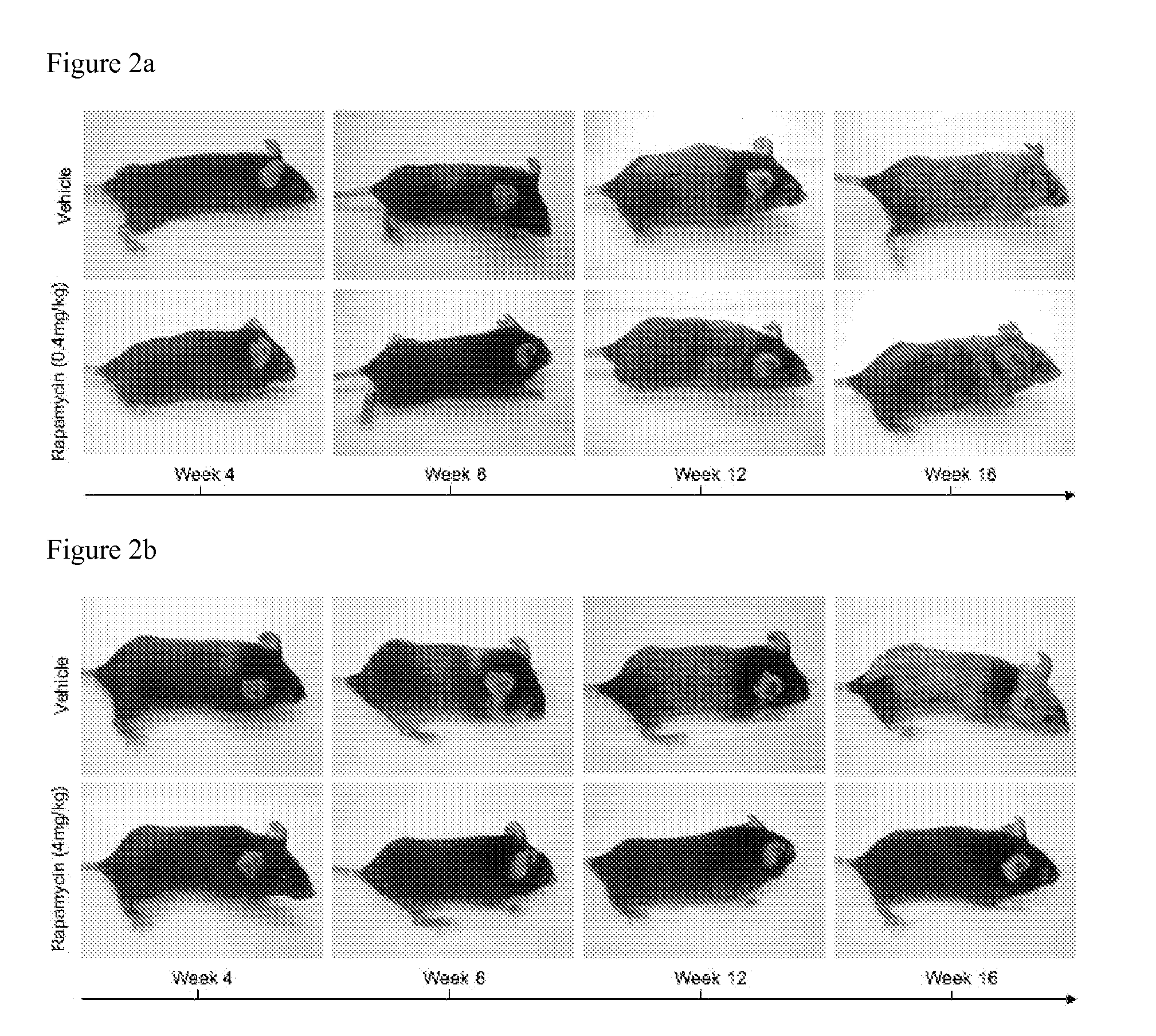Compositions and Methods for Preventing and Treating Hair Growth Cycle-Related Conditions
a technology for hair growth and cycle, applied in the field of compositions and methods for preventing, treating, and researching hair growth cyclerelated conditions, can solve the problems of reducing hair growth, reducing hair growth, and increasing so as to delay the onset of hair, increase the duration of hair growth cycle, and reduce the effect of hair loss
- Summary
- Abstract
- Description
- Claims
- Application Information
AI Technical Summary
Benefits of technology
Problems solved by technology
Method used
Image
Examples
example i
[0096]This example describes the materials and methods used for Example. II.
[0097]Mice: DCT-LacZ mice were backcrossed for 3 generations on a C57BL background.
[0098]Irradiation and Bone Marrow Transplant: Adult recipient mice were irradiated using a gamma cell irradiator. Mice received two doses of 560 rads each delivered 3 hours apart (FIGS. 1-4, FIG. 7, Table 1). Mice received 1,000,000 whole bone marrow cells isolated from a C57BL donor (FIGS. 1-4, FIG. 7, Table 1). Bone marrow cells were suspended in HBSS free with 2% Bovine Serum and injected via the retro orbital venous sinus. Where indicated, mice were sublethally irradiated with 650 rads and not subjected to bone marrow transplant (FIG. 6).
[0099]Rapamycin: Rapamycin (LC Laboratories) was administered by intraperitoneal injection. Rapamycin was reconstituted in ethanol (10 mg / ml or 1 mg / ml) and diluted into a solution of 5% Tween-80 (Sigma) and 5% PEG-400 (Hampton Research). The final volume injected was 200 μg. Dosing and ad...
example ii
[0102]It has been observed that when mice receive a bone marrow transplant, their hair loses pigmentation over time following transplant resulting in mice that have a gray haired appearance (see FIG. 1). To systematically test the ability of rapamycin to alter hair graying, 1 million whole bone marrow cells were transplanted from a C57BL mouse into recipient mice that received intraperitoneal injections of either rapamycin or vehicle control. Due to perceived sensitivity to high doses of rapamycin immediately following transplant, the mice were treated every other day with rapamycin at a dose of 0.4 mg / kg or vehicle control for the first two weeks. After this time period, the mice were treated every day with doses of either 0.4 mg / kg or 4 mg / kg of rapamycin or vehicle control. The onset of graying was delayed and the extent of graying lessened in mice treated with rapamycin at 0.4 mg / kg / day for four months (see FIG. 2a). Hair graying was prevented in mice treated with rapamycin at 4...
PUM
| Property | Measurement | Unit |
|---|---|---|
| volume | aaaaa | aaaaa |
| insulin resistance | aaaaa | aaaaa |
| color | aaaaa | aaaaa |
Abstract
Description
Claims
Application Information
 Login to View More
Login to View More - R&D
- Intellectual Property
- Life Sciences
- Materials
- Tech Scout
- Unparalleled Data Quality
- Higher Quality Content
- 60% Fewer Hallucinations
Browse by: Latest US Patents, China's latest patents, Technical Efficacy Thesaurus, Application Domain, Technology Topic, Popular Technical Reports.
© 2025 PatSnap. All rights reserved.Legal|Privacy policy|Modern Slavery Act Transparency Statement|Sitemap|About US| Contact US: help@patsnap.com



